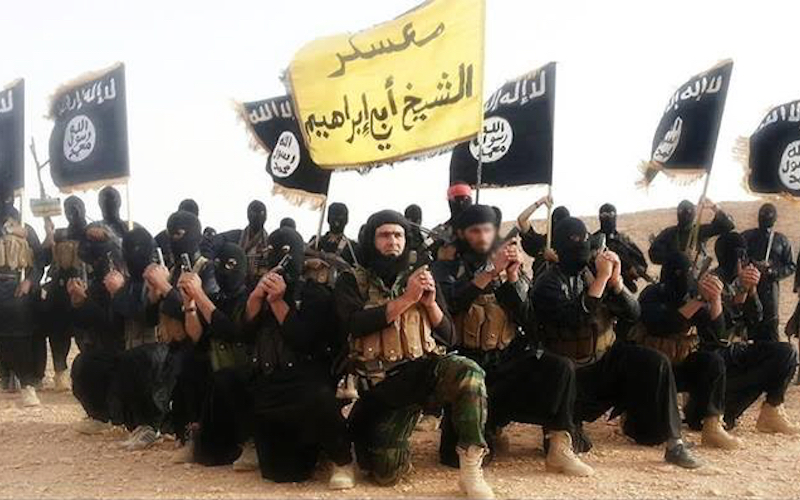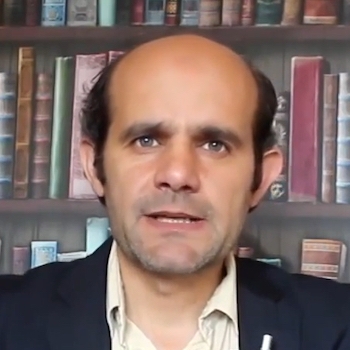
ISIS’ Grand Strategy
The rapid and sweeping advances that ISIS has made in Iraq and Syria have shocked observers and puzzled many military and political experts, to the extent that many people think that ISIS’ advances are somehow out of the ordinary. I think, however, that ISIS has adopted a strategy of five pillars, through which its advances can be properly explained. ISIS started to build a horrifying and intimidating image for itself, both on the land it governs, and more importantly around the world, through its unexpectedly sophisticated and developed media industry, communications, and film production – all of which act to propagate its operations and actions. The images and videos that show the burning, slaughtering, and drowning of its enemies and spies were shocking and terrifying. In a nutshell, ISIS has wanted to send a message of brutality and ruthlessness to all of its enemies and adversaries, which is: “If you fall into our hands, a bullet in the head would be a luxury death.”
Its message has been well understood, so committing suicide or fleeing became the bravest decisions for opposition fighters who are defeated at its hands. ISIS has turned out to be akin to a ruthless savage who everyone seeks to avoid, for fear of falling into its hands. Even its name – just a moniker – became an effective weapon against its enemies on the battlefield. In other words, ISIS is winning the psychological war against its enemies. The Iraqi Army, for instance, fled the large province of Al-Ramadi in May 2015 when ISIS approached it, facilitating the ever-so-swift fall of that province.
Furthermore, ISIS has adopted the pre-emptive war doctrine; this much is very clear from its strategy. ISIS cannot allow a suspected threat to grow and develop, and hence later constitute a clear and present threat to its dominance.
In fact, it seeks to eliminate or liquidate all potential threats and dangers, without hesitation or shred of mercy. ISIS has now gained the ability not just to see current threats, and deal with them, but to intuitively detect future threats too, and strategize how to uproot them. ISIS has learnt the lesson of Iraq after 2003 (the group was then titled Al-Qaeda in Iraq), when it paid a heavy price fighting the strong Awakening Councils that were established and trained by American forces.
Although the pre-emptive war doctrine constitutes a big burden on ISIS, consuming a great amount of its capacity and distracting from its main operations against the Syrian regime, ISIS regards the doctrine as a strategic priority, from which it does not compromise. This policy can explain ISIS fighting against both brigades of the Free Syrian Army and some Islamic groups and tribes in Syria, which receive different kinds of regional and international support.
ISIS’ strategy is focused more on exhausting and killing the enemy, rather than on capturing lands, acquiring new territories, or holding onto areas. It is very similar to the US strategy in Vietnam, when victory was measured by the number of deaths among the Viet Cong rather than by the land that was acquired. In (Ain Al-Arab) Kobani, ISIS left the city, but only after months of heavy fighting, when Kurdish fighters were exhausted and the city was destroyed. Indeed, ISIS does have the desire to expand, and does work for that goal “Remaining and Expanding,” but not at any cost. In fact, ISIS targets the lesser controlled areas, where the regime’s grip is relatively weak, or the regimes require great efforts to recapture them when they are lost. However, when it comes to vital, rich areas, such as the oil or gas fields, ISIS puts in enormous efforts to capture and control these areas. Moreover, ISIS will resolutely hold onto key and central areas, such as the city of Mosul, its capital.
ISIS military strategy is believed to be complicated, seemingly conducted by the Al-Shura Council (Majlis Al-Shura). This council contains some former high-ranking military and security generals from the Iraqi army of Saddam’s era, but these officials have since given full allegiance and loyalty (Bai’ah) to ISIS. The implemented military strategy is unique and unprecedented as it combines guerrilla warfare and conventional warfare. For instance, ISIS captured Mosul through guerrilla warfare (using only 400 fighters), but is defending the city now through a conventional warfare doctrine. Likewise, only 420 guerrilla fighters were fighting the International Coalition and the Kurdish fighters in (Ain Al-Arab) Kobani. Moreover, the strategy of engagement and withdrawal, and the tactics of moving swiftly from one front to another, might make the International Coalition’s strategy of combating ISIS ultimately unsuccessful. From another aspect, ISIS has built a very strong and consolidated internal security system, so penetration from outside is a big task if not impossible.
This grand strategy is executed on the ground by fighters, not like any other fighters in the world. On the one hand, they are well-trained militarily, so they are tough, and move from one front to another like fleas or moles. On the other hand, they are fully loaded with Jihad ideology, and fully focused on their goals, so their sacrifices for the sake of Islam seemingly have no material limits. It is enough to know that ISIS fighters pursue or compete on carrying out the suicide-bombing operations. Moreover, their loyalty to Sheikh Al-Baghdadi (The ‘Caliph’) is very strong, and their obedience and submission to their field leaders is absolute.
The immigrant fighters (Al-Muhajeroon) constitute a big asset to ISIS; they have accumulated Jihad experience and are flooded with passion and enthusiasm. Therefore, ISIS spares no effort in attracting them along with their families, and offering them great support in order to integrate them into their new environment; the immigrant fighters and their families travel to the ‘Islamic State’ in order to live in a supposed Islamic environment, under the implementation of Shari’a Law. The immigrant fighters have great presence in the Syrian territory that ISIS controls, and this is due to three reasons: 1) The popular Syrian support to ISIS’ ideology and strategy is lower than the Iraqi popular support; 2) The poor experience of the Syrian people in wars and fighting; 3) the Syrians, in general, are still under the influence of Sufism, which considers ISIS’ ideology and activities as non-Islamic or extremist. In contrast, ISIS’ activities in Iraq are mainly conducted by Iraqis (Al-Ansar), who have adopted ISIS’ ideology, and have gained significant experience after years of fighting the American occupation and the Iranian sectarian cleansing in their country.
